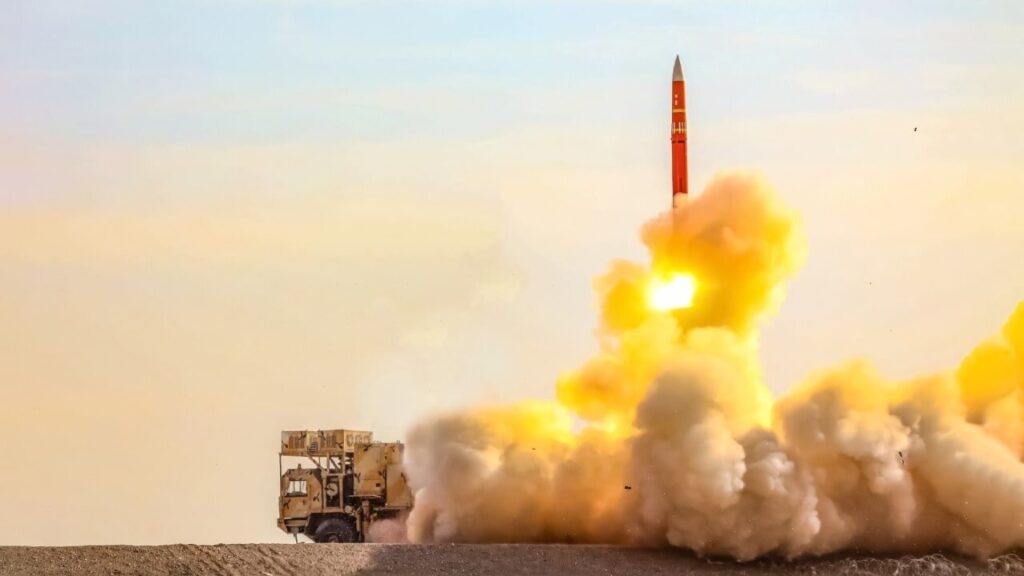Tehran – In an exhibition of technical sovereignty, Iran’s defense sector achieved a milestone highlighting the transformation from pre-revolutionary dependency to military innovators.
Iran is redefineing its security paradigm, with over 900 indigenous defense systems currently operating, combining cutting-edge engineering, asymmetric tactics and geographic ingenuity to counter existential threats, according to the Ministry of Defense.
Before the Islamic Revolution in 1979, Iranian troops relied on only 31 defense systems.
On Sunday, Ministry of Defense spokesman Admiral Leza Tarai Nick claimed that the nation is producing an incredible array of over 900 defence systems, ranging from ballistic missiles to unmanned aerial vehicles (UAVs).
He stressed that this reflects “youth geniuses from universities and knowledge-based companies.” He turned sanctions into catalysts for independence.
Multi-layer shield
Iran’s air defense capabilities tell a story of innovation, resilience and national pride. This is a layered network built to intercept the threat from low-flight drones to high-altitude aircraft.
This multi-layered approach, backed by sophisticated technology and homemade ingenuity, ensures that every aspect of Iranian airspace remains robustly protected.
I. The long-range segment of this robust defense system is a testament to domestic ingenuity and strategic offsetting of the region.
The Bavar-373, a proudly homemade counterpart of the Russian S-300, boasts a horrifying range of nearly 300 kilometers with integrated radar systems monitoring the sky.
In parallel, the upgraded version of the Russian S-300PMU2 further refines this feature by skillfully tracking stealth aircraft.
In addition to this impressive array, it is a recent Indigenous breakthrough announced in 2023, specially designed to counter the threat of ballistic missiles, thereby solidifying Iran’s long-range defense stance.
ii. The medium-range arena displays Iran’s tactical mobility and adaptation strategies in full. The mobile launcher equipped with the Sayyad-3 missile illustrated in the Khordad-15 system is designed to effectively confront modern aviation threats, from drones to fighter jets.
Based on this, the RAAD-2 system offers an evolution from the predecessor of the Soviet era 2K12 KUB.
Complementing these efforts is the Mersad system. This is a refined rethink of the US MIM-23 Hawk and will be reformed as Tawakalna-1. This benefits from an enhanced guidance system that highlights Iran’s commitment to overcoming external challenges.
iii. As you approach your home, the short range and points defense sectors reflect a layered approach that ensures protection against immediate threats.
Adapted from the Russian TOR-M1, the HERZ-9 system specializes in low-altitude interception and neutralizes rapidly moving targets with expert accuracy.
In situations where a rapid and sustained response is required, the Ya Zahra-3 is ready to counter saturation attacks with its rapid launch capabilities, but the Azarakhsh system provides the high accuracy of laser-guided missiles and protects critical nuclear equipment.
IV. The country’s commitment to a comprehensive defense strategy is even more evident in the deployment of a highly versatile human import system.
The MISAGH-3, a heat-seeking missile system used by IRGC units, effectively protects mobile missile launchers, ensuring that the frontline of defense remains empowered and agile.
Meanwhile, the Soheil system highlights the nation’s overall approach to providing infantry with lightweight fire and forgotten solutions, and equipping its state-of-the-art technology that can quickly respond to emerging threats.
V. Overall shield strengthening is a sophisticated air defense gun system. A modernized version of the classic ZSU-23-4 Silka equipped with advanced thermo-optics ensures operational effectiveness even under the cloak at night.
Equally impressive is the locally tailored samabat, an adaptation of Swiss Olilicon guns, which stands as a breakwater near a critical infrastructure.
Collectively, these systems strengthen Iran’s sovereignty. Every aspect of the air defense network reinforces its dynamic and formidableness as the challenges it faces.
Furthermore, Iranian Zagros and Alborz Mountains act as natural fortresses, allowing Iran to hide mobile launchers and radar, turning geography into a force multiplier.
The country’s mountains are called “natural fortresses,” with mobile air defense units disappearing into the terrain, and short-range systems protecting high-value sites.
Electromagnetic Gambit
Additionally, the country has significantly advanced its electronic warfare (EW) capabilities and has established itself as a regional leader in asymmetrical technical conflicts.
The heart of that strategy is the deployment of domestically developed ground-based systems such as FAJR and NASR, designed to interfere with GPS signals, destroy communications links, and interfere with enemy radar systems.
Recent drills showcase Iran’s integration of EW systems across the military sector, testing radar deceptions, disruptions in radio communications, and calibrated attacks using micro aviation vehicles (MAVs).
Operational Resilience: Lessons from Conflict
During the Israeli regime’s attack on Iran in October 2024, Iran’s air defense reportedly hindered 70-90% of incoming missiles and UAVs.
Analysts praise the success of Iran’s mobile air defense system. Iran’s mobile air defense systems are strategically deployed in mountainous regions to avoid detection, like vulnerable fixed radars, so these units behave like elusive ghosts.
Tel Aviv boasted of Iran’s defensive infrastructure “discretionary,” but Tehran dismissed these claims as psychological warfare, citing its decentralized, terrain-rich attitude.
Since the attack, there have been multiple air defense drills, some have introduced new systems, commenting on the lessons learned by Iranian military chief of staff, Major Mohammad Bagieri, and Iranian Hossein Salami, and on the strategic improvements that Iran has derived from past experiences and technological advances.

